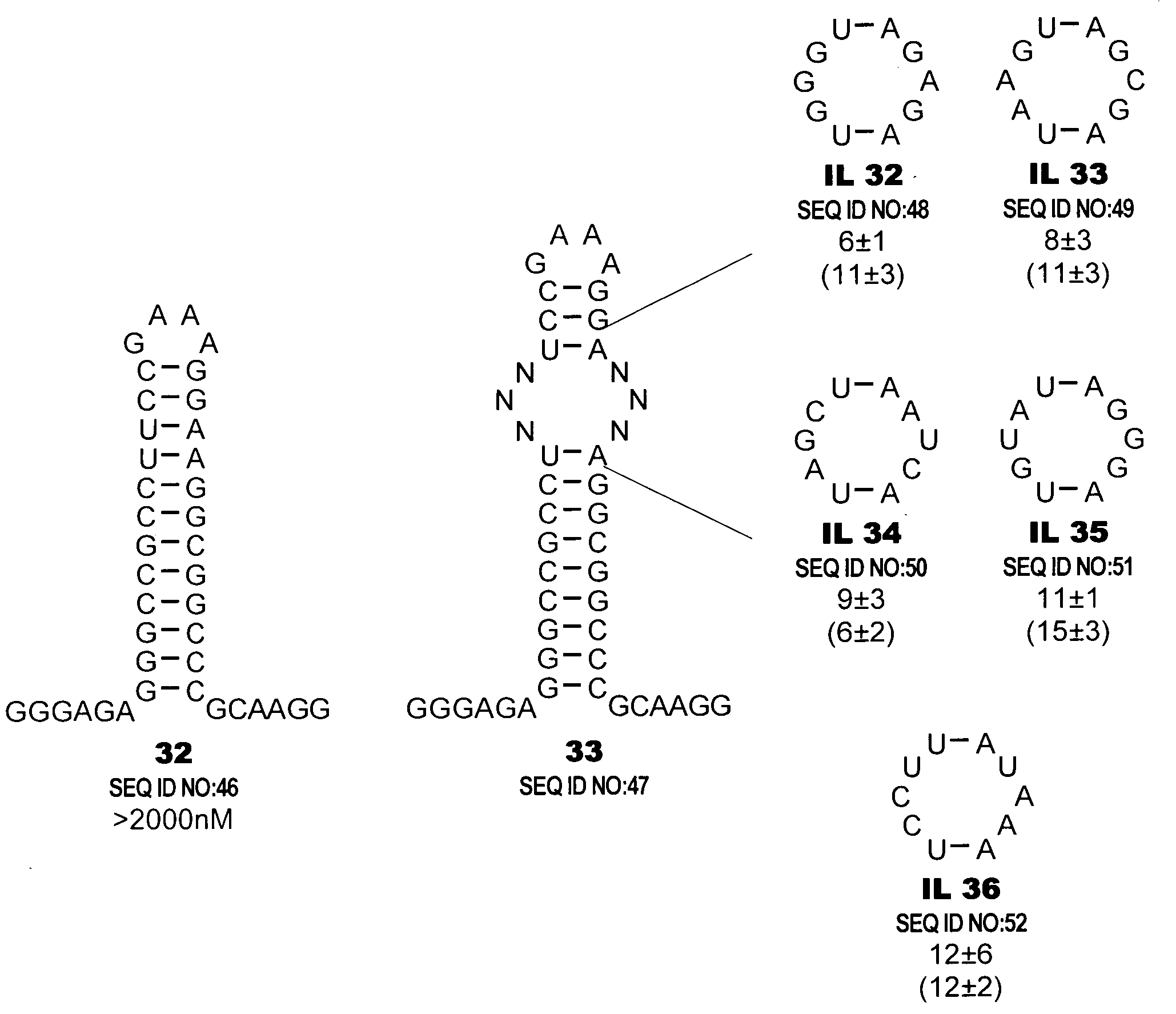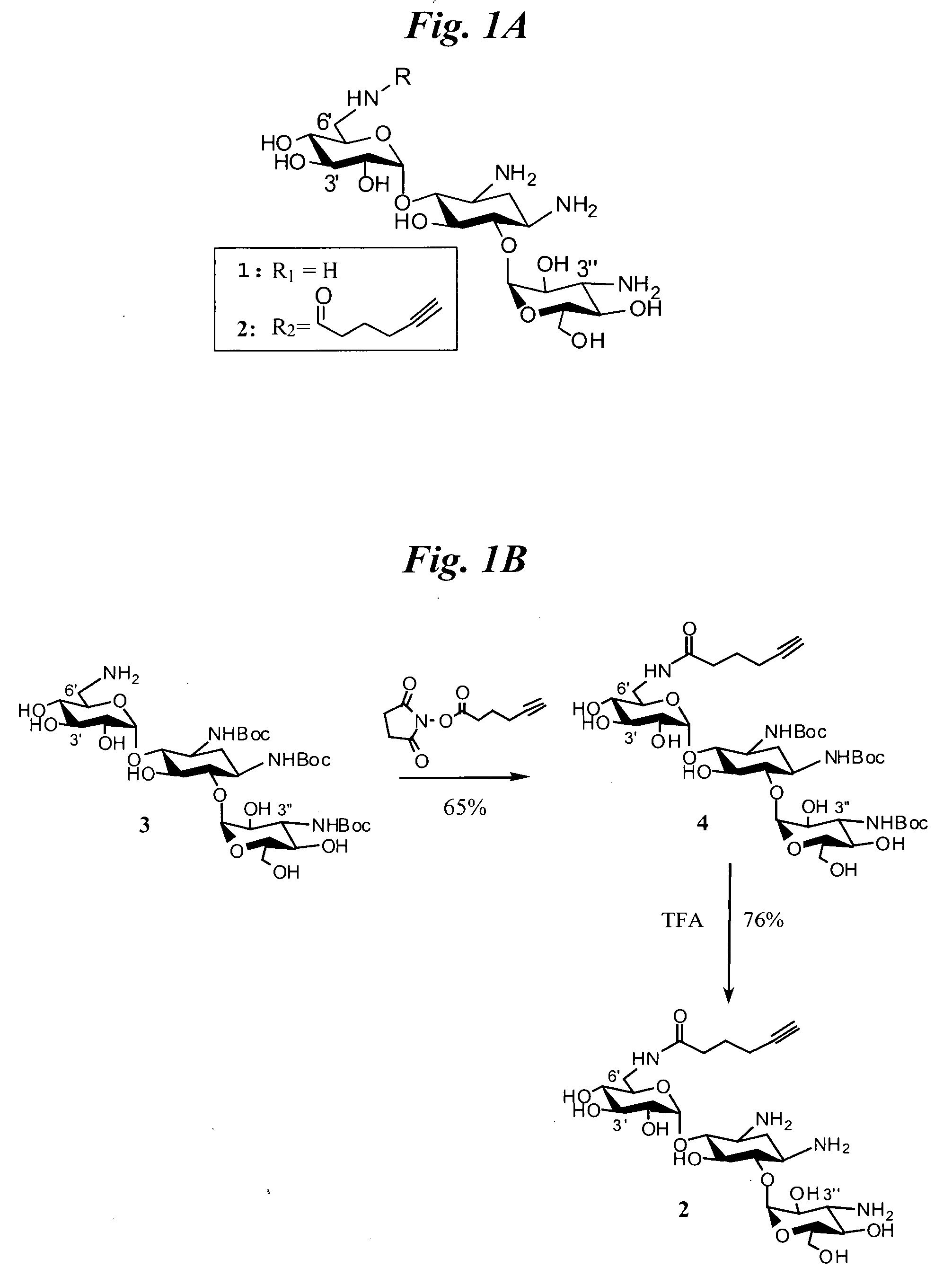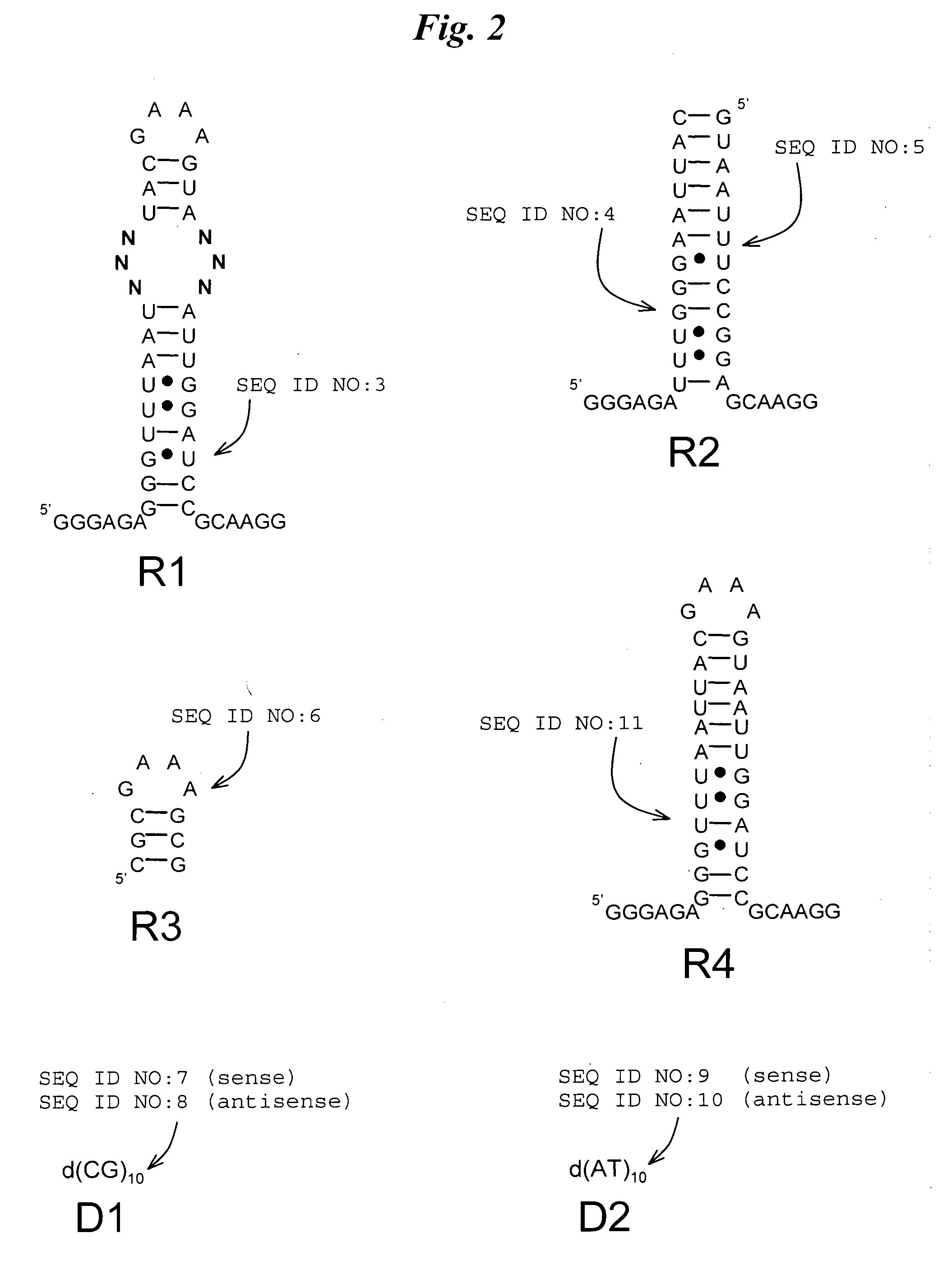Methods for identifying ligands that target nucleic acid molecules and nucleic acid structural motifs
a nucleic acid and ligand technology, applied in the field of identifying ligands that target nucleic acid molecules and nucleic acid structural motifs, can solve the problems of not being able to achieve the understanding of how to target rna with small molecules and other ligands, and not being able to conduct systematic study of rna-ligand interactions, so as to increase the likelihood of binding, and reduce the likelihood of binding
- Summary
- Abstract
- Description
- Claims
- Application Information
AI Technical Summary
Benefits of technology
Problems solved by technology
Method used
Image
Examples
example 1
Using Selection to Identify and Chemical Microarray to Study the RNA Internal Loops Recognized by Kanamycin A: Overview
[0058]In this Example 1 and in the following Examples 2-3, we describe our initial steps towards constructing a database of RNA-small molecule binding partners to aid rational design of compounds that target RNA. In order to do so, we have developed a selection-based approach that requires only a single round of selection to identify the RNA secondary structural elements (internal loops, hairpins, and bulges, for example) that bind small molecules. By screening RNA secondary structure libraries, we increase the chances of finding library members in a large biologically active RNA, such as rRNA. This is in contrast to Selective Exponential Enrichment (SELEX) experiments [53, 54] that have identified RNAs ranging from 17-mers to 30-mers that bind ligands with high affinity and specificity. Although the SELEX / aptamer approach finds high affinity RNA-ligand partners, it...
example 2
Using Selection to Identify and Chemical Microarray to Study the RNA Internal Loops Recognized by Kanamycin A: Results and Discussion
[0060]Selection of the RNA Internal Loops that Bind Kanamycin A. Selection experiments were completed with kanamycin A (FIG. 1A, compound 1) immobilized onto sepharose resin and an RNA 3×3 internal loop library embedded in a hairpin cassette (R1, FIG. 2). This library was designed from a sequence used by others to identity RNA motifs that have interesting thermodynamic properties [34, 55]. Features of the library include an ultrastable GAAA (GNRA-type) hairpin [56] to facilitate proper folding and single stranded primer binding sites for amplification via RT-PCR. Kanamycin A was used in our initial study because it is a known RNA-binding ligand and it has been shown to bind non-canonically paired RNAs like those displayed in the random region of our library. Additionally, this ligand has been immobilized onto resin and used for selection experiments [5...
example 3
Using Selection to Identify and Chemical Microarray to Study the RNA Internal Loops Recognized by Kanamycin A: Materials and Methods
[0071]This Example 3 describes the materials and methods that were used in carrying out the experiments described in Example 2.
[0072]Selection and Nucleic Acid Synthesis. General Methods. Nanopure water was used in all experiments. All solutions for buffers were prepared with DEPC-water to insure the absence of nucleases. All DNA oligonucleotides were purchased from Integrated DNA Technologies (“IDT”) Coralville, Iowa) and were purified by denaturing 17% PAGE. DNAs were visualized by UV shadowing, and the products were extracted from the gel slice by tumbling overnight in sterile 0.3 M NaCl at 4° C. tRNA XSA from Baker's yeast used in the microarray binding experiments was purchased from Sigma-Aldrich. N-hydroxyl succinimide-activated sepharose was purchased from Amersham. Reverse transcriptase was obtained from Life Sciences, Inc. (St. Petersburg, Fla....
PUM
| Property | Measurement | Unit |
|---|---|---|
| temperature | aaaaa | aaaaa |
| temperature | aaaaa | aaaaa |
| pH | aaaaa | aaaaa |
Abstract
Description
Claims
Application Information
 Login to View More
Login to View More - R&D
- Intellectual Property
- Life Sciences
- Materials
- Tech Scout
- Unparalleled Data Quality
- Higher Quality Content
- 60% Fewer Hallucinations
Browse by: Latest US Patents, China's latest patents, Technical Efficacy Thesaurus, Application Domain, Technology Topic, Popular Technical Reports.
© 2025 PatSnap. All rights reserved.Legal|Privacy policy|Modern Slavery Act Transparency Statement|Sitemap|About US| Contact US: help@patsnap.com



